NORTH WALES COAST
RAILWAY: NOTICE BOARD
Rheilffordd arfordir gogledd Cymru: Hysbysfwrdd
02 May 2011
 Last issue
Last issue Archive
Archive Contributions and comments are encouraged: see the Contributions Page
This site is dedicated to all our regular contributors and supporters, and especially the rail staff of North Wales.
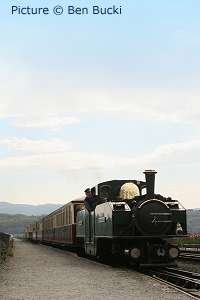
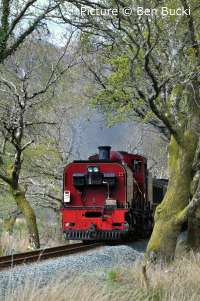
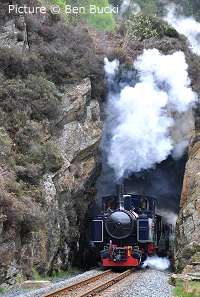
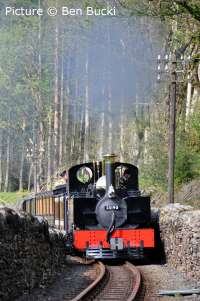
Forthcoming events
May 2011
Thursday 12 May Llandudno and Conwy Valley Railway Society
A presentation by Paul Lewin, General Manager, FR/WHR on the current
operations of these two fascinating railways.
Thursday 12 May Steam at Chester 'The Cathedrals Explorer' Steam Dreams Oxenholme - Carmarthen via Chester - Shrewsbury - Llandrindod.
Friday 13 May Excursion 'The North Wales Scotsman' Compass Tours Holyhead, Llanfairpwll, Bangor, Llandudno Junction, Colwyn Bay, Rhyl, Flint & Chester to Dundee via the Forth & Tay Bridges.
June 2011
Sunday 19 June Steam on the Coast: Northern Belle Father's Day Special. Crewe-Holyhead and return with 46201 Princess Elizabeth.
July 2011
2 & 3 July – Welsh Highland Heritage Railway, Porthmadog – Steam in the Sheds. 'Over a hundred very small steam engines will be on display and working in the Engine Sheds.
Tuesday 9 July Conwy Valley Steam: Railway Touring Company, 'The Welsh Mountaineer' Preston - Blaenau Ffestiniog.
August 2011
Note: The Railway Touring Company tours in August can also be booked together as a week's package which also includes steam trips on the 'Cumbrian Mountain Express' and 'The Cambrian'.
Sunday 7 August Steam on the Coast: 'The North Wales Coast Express' Railway Touring Company Liverpool and Chester to Colwyn Bay, Llandudno, Bangor and Holyhead. Hauled throughout, by one of 6100 Royal Scot, 6201 Princess Elizabeth, or 60019 Bittern.
Tuesday 9 August Conwy Valley Steam: Railway Touring Company, 'The Welsh Mountaineer' Preston - Blaenau Ffestiniog.
Sunday 14 August Steam on the Coast: 'The North Wales Coast Express' Railway Touring Company Liverpool and Chester to Colwyn Bay, Llandudno, Bangor and Holyhead. Hauled throughout, by one of 6100 Royal Scot, 6201 Princess Elizabeth, or 60019 Bittern.
Saturday 20 August Steam on the Coast: Vintage Trains Tyseley - Llandudno and return with 5043.
Sunday 21 August Steam on the Coast: 'The North Wales Coast Express' Railway Touring Company Liverpool and Chester to Colwyn Bay, Llandudno, Bangor and Holyhead. Hauled throughout, by one of 6100 Royal Scot, 6201 Princess Elizabeth, or 60019 Bittern.
Tuesday 23 August Conwy Valley Steam: Railway Touring Company, 'The Welsh Mountaineer' Preston - Blaenau Ffestiniog.
27, 28 & 29 August –August Bank Holiday Weekend Welsh Highland Heritage Railway, Porthmadog – Fun Whatever The Weather!
'Who cares if it rains over the Bank Holiday? We’ve organised a special fun weekend, including chance to win a prize if you find the Welsh Dragons hiding in the Engine Sheds.'
See the Calendar page for more details and later dates.
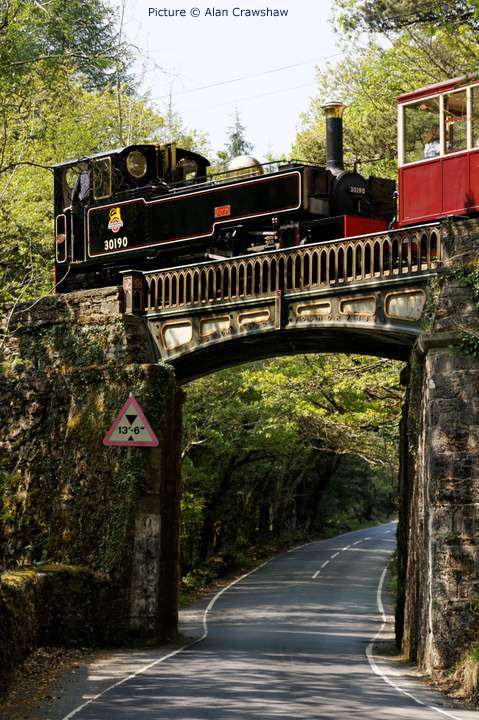
Lyd, in its mock BR livery, passes over the B4410 road at Tan y Bwlch on its way to Porthmadog on 30 April. The bridge girder inscription reads "Boston Lodge Foundry 1854" - the railway workshop was very versatile. Picture by Alan Crawshaw.
Again thanks for all the contrubtions, some of which we ran of time to include: expect an extra issue on 6 May. - Charlie
GWR double to Llandudno
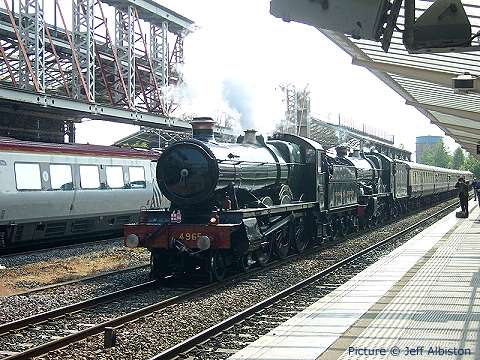
30 April saw an excursion from Tyseley (Birmingham) to Llandudno, the 'Llandudno Victorian Festival Special' double-headed by two Tyseley-based locomotives, GWR Hall Class 4-6-0 4965 Rood Ashton Hall and GWR Castle Class 4-6-0 5043 Earl of Mount Edgcumbe. We pick up the train at Chester as it comes to a brief stand in the through line to allow a Holyhead service train to depart from Platform 3 (Jeff Albiston)
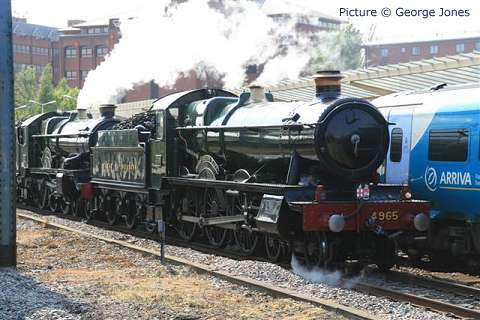
There were some problems for photographers at Chester, with a clear blue sky and the sun in the wrong position for shots from platform 4 at 10:30. Above, the green locos contrast with a Class 175 (George Jones).
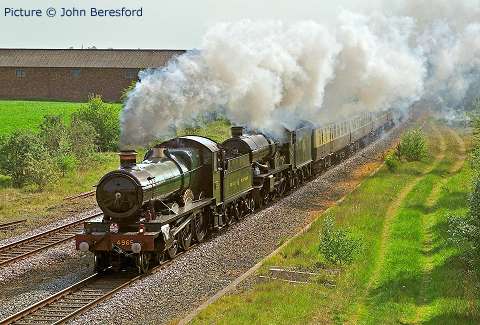
At Mold Junction it was wind that was the problem: John Beresford writes: 'I only just managed this shot through the swirling wind-driven steam and smoke.
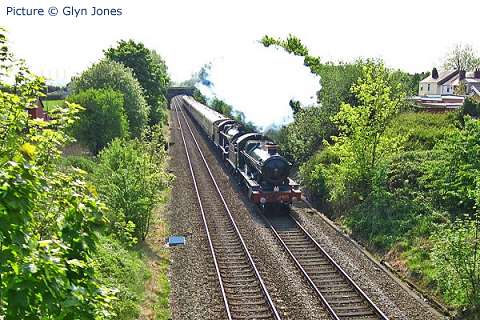
Near Flint (Glyn Jones)
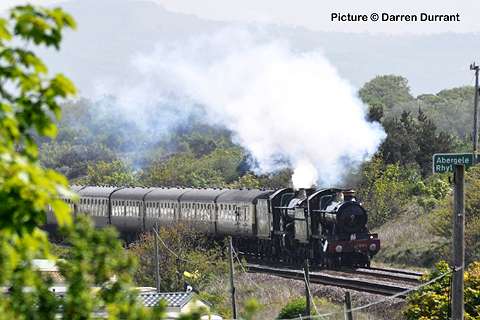
Llanddulas (Darren Durrant)
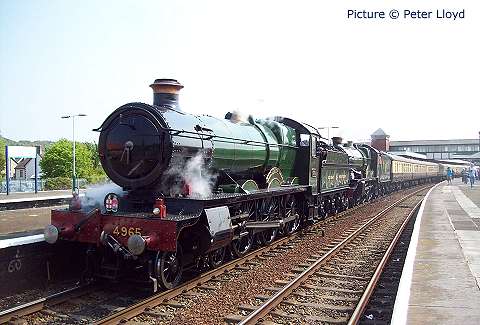
Arrival at Llandudno Junction, 11:30 (Peter Lloyd)
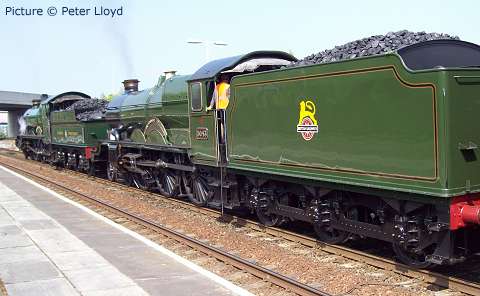
No risk of running short of coal, apparently (Peter Lloyd)
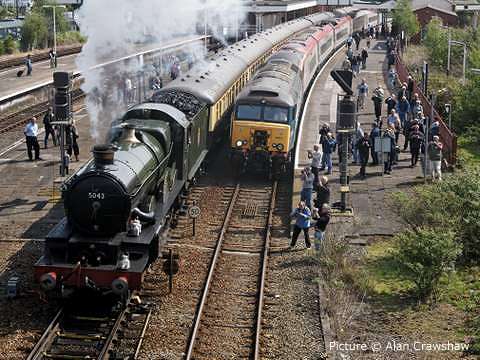
About to set off for Llandudno from Llandudno Junction, after 4965 has been run round to the rear to simplify the reversal at Llandudno. 57 313 is alongside with the "Pendolino drag" for Holyhead. (Alan Crawshaw). The usual idiots are wandering down the platform ramp, even though there is a train awaiting departure behind them. Readers: If you see anyone doing this, please give them a talking to; if it carries on we'll find that Network Rail puts a fence across the platform end as has happened elsewhere.
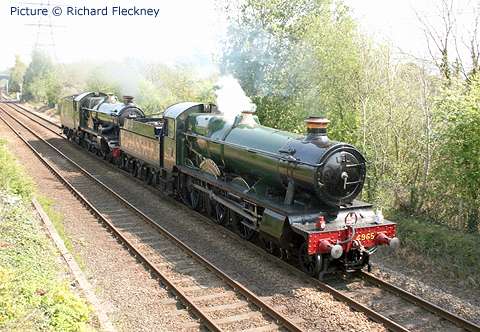
The two locos ran to Valley to turn on the triangle: Richard Fleckney captured them at Llanfair PG.
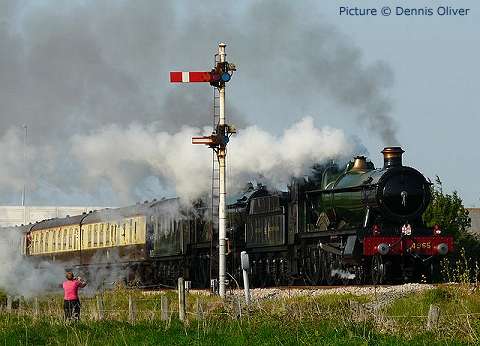
Departing Llandudno at 17:55 (Dennis Oliver)
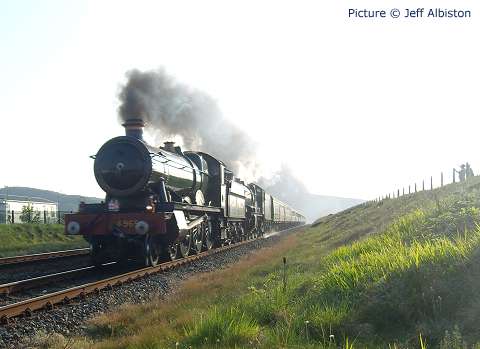
On their way back to Tyseley passing through Abergele (Jeff Albiston).
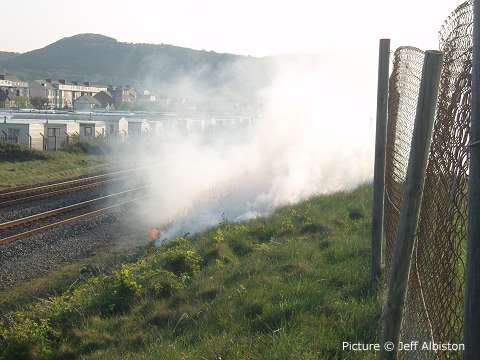
Unfortunately, the train left a barrage of lineside fires between Abergele and Rhyl, which caused delays to Arriva Trains Wales services. The fire spread quickly on the dry ground, but the fire services were quickly on the scene thanks to the quick thinking of the signalman at Abergele station. (Jeff Albiston). This is not the only incident of its kind in this dry spell: the 'Great Britain IV 'round the country' special set light to an RSPB bird reserve near Forsinard on the Far North line, and a helicopter had to be brought to hep fight the fire the that remote area.
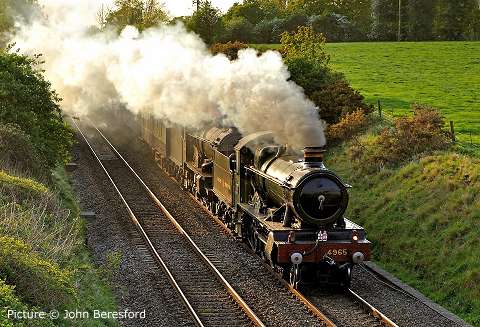
The exhaust from 4965 laid a smokescreen in Waverton cutting in the evening light. The train was almost 20 minutes early on the return run - it must have caught out quite a few linesiders - nonetheless the double-header made for a great sight and sound (John Beresford).
Talyllyn Easter - report by Alan Crawshaw
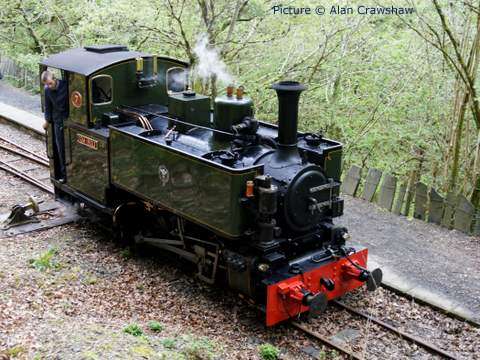
On Easter Saturday we caught the 10:00 Birmingham International service from Porthmadog, which connects perfectly with the 11:40 Talyllyn Railway departure from Tywyn. We were a bit worried when a late-running northbound service delayed us at Harlech, as our connection would be very tight. The very obliging Arriva conductor spotted our Talyllyn timetable and offered to phone the railway to tell them a couple of passengers may be slightly late. We just made it in time anyway, and there was still a queue at the booking office for this very popular departure, which left five minutes late.
After a very enjoyable run up the valley to the terminus at Nant Gwernol we were able to alight and inspect the locomotive, No 7 Tom Rolt seen above about to run round its stock. From the Talyllyn website: Tom Rolt was built at the Talyllyn's Pendre Works, incorporating components of a little-used 3ft gauge Andrew Barclay 0-4-0WT built in 1949 for Bord na Mona (the Irish turf board). An 0-4-2T, it is the line's newest, largest and most powerful steam locomotive, having entered service in 1991. It is named after the author L.T.C. Rolt who inspired the Talyllyn's preservation and was its General Manager in 1951-52.
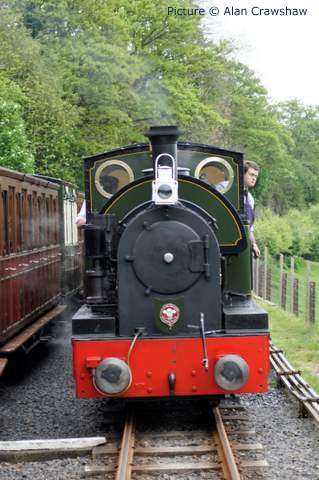
On the way back, we passed No.4 Edward Thomas, the other locomotive in service that day. The Talyllyn has been somewhat overshadowed by the re-opening of the Welsh Highland but it's a lovely little line and celebrates its 60th anniversary as a preserved line this year. The anniversary gala weekend takes place in mid May, details can be found on the Railway' Events Page.
Our 14:00 arrival at Tywyn Wharf station allowed us time for a leisurely lunch in the buffet before strolling back to the Cambrian station for the 15:23 departure.
Chaos on the Cambrian - report by Alan Crawshaw
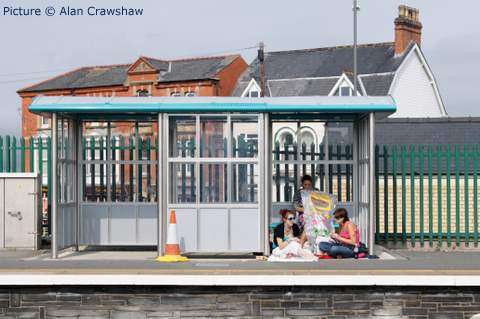
The information display at Tywyn on 30 April (see Talyllyn report above) advised that the 15:23 to Pwllheli was expected at 15:49 so we took a look at the sea. Back at the station, the passengers on the other platform were resigned to an hour's delay for the 15:24 to Machynlleth (above). 15:49 came and went, our train disappeared from the board but the train itself didn't arrive. A passenger phoned from the "help point" and was told it was expected at 16:17. When it didn't arrive, my daughter phoned the "help point", the person answering didn't have a clue what was going on, said he'd look into it and would call back ... but no call came.
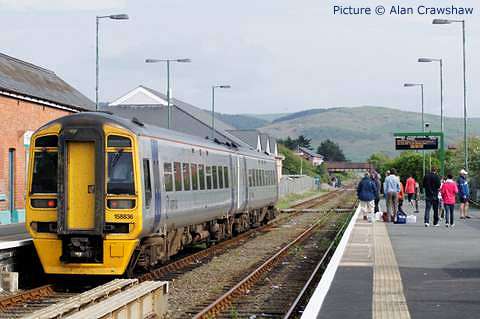
Nothing appeared until the Machynlleth service rolled in at 16:33 and waited (above), raising our hopes that our train was in the section. At 17:00, the conductor from the Machynlleth train came across to tell us that she'd just been informed that our train had recently left Machynlleth. The cause of the delays was a failed axle counter between Welshpool and Newtown.
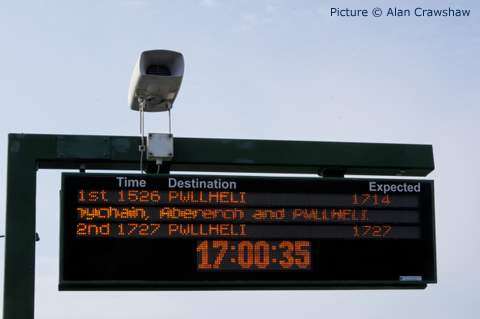
Finally at 17:21 both trains left, both two hours late. No further delays ensued and we reached Porthmadog two hours and three minutes late, but the service was terminated here so passengers for stations for Pwllheli had to alight to await the next service. Surprisingly for one of the main stations on the line, there is no information display here, so I don't know how delayed the next one would be.
Cambrian Thoughts - by Charlie Hulme
Alan's report above paints a sad picture - but no doubt we will be told that a new system like this can expect teething troubles. A project manager told the railway press recently that the implementation has gone better than expected, which may well be true. The very first day of the Cambrian-wide implementation, 28 March, a number of troubles were encountered, including axle counter and points failures, but most days have run fairly smoothly.
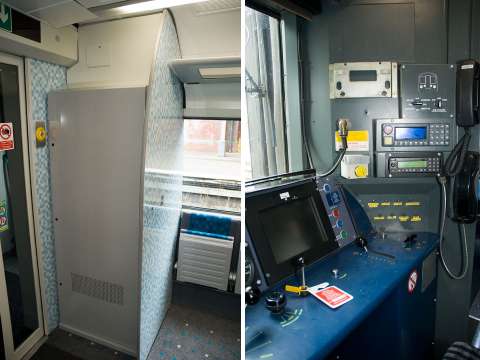
Above, two pictures by Richard W. Jones taken (with permission) at the recent launch of 158 840. Left, the cabinet in the passenger area necessary to contain the ERTMS equipment; sitting in that folding seat could be for narrow-gauge persons only ... Right, the cab, showing the array of controls and screens. The large ERTMS display faces the driver; let's hope drivers remember to look out for passengers at request stops!
It is important to realise that the new system is more than a replacement for the Radio Electronic Token Block (RETB) system, which was conceived as a low-cost system for lightly-traffic lines such as the Cambrian network. The points at the crossing loops were fitted with a hydraulic system so that trains could 'trail' through them and they returned to normal for the next train coming the other way, and there was no 'detection' of the position of the position of trains on the route, the signaller at Machynlleth relied entirely on the data sent by radio to and from the train (electronic tokens) and voice messages by radio as required, to monitor train running. This greatly simplified the wiring and power supplies, even though some considered it 'unsafe' - yet in the 20-plus-year life there never was anything resembling a repetition of the notorious 1921 Abermule disaster.
The ERTMS system, on the other hand, is designed for general purpose use around Europe, and indeed is in use to some extent in other countries. The Cambrian set-up is intended to test its application in UK conditions. Therefore, it needs to provide all the safety features of a main line. The central computer needs to know where trains are and whether they are complete, and the points need to be powered. All the crossing loop points now have 'clamp-lock' point motors which are controlled by the computer system under the command of the signaller.
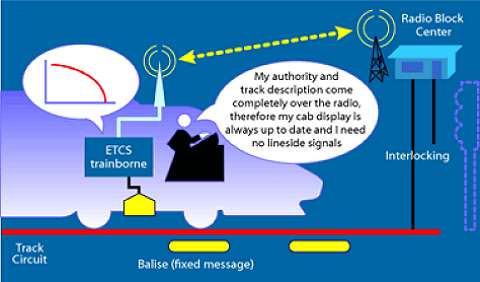
In ERTMS, the equipment on the train also keeps track of the location of the train by measuring how far it has travelled; the information is continuously transmitted over the GSM-R radio network to the control centre, and is checked and re-calibrated when passing over 'balises' - small passive transmitters between the rails which transit their location to the train as it passes. The diagram above is from www.ertms.com.
Detection of trains for safety reasons is traditionally by track circuits, but in this job and in some recent non-ERTMS signalling work, 'axle-counters' have been used. An axle-counter is a detector set near the rail that electronically detects the passing of a train wheel, and counts how many wheels have passed, at entry to a defined section of line. A counter at the other end of the section counts the wheels again so the system 'knows' that no vehicles have been left behind.
Axle-counters on the Cambrian provide a safety measure additional to that provided in the past. Unfortunately they seem to be giving trouble. If an axle-counter fails, then a train will be 'lost' and the signaller cannot set any routes. One might think that in such a situation there is a back-up way to proceed without too much detail, since the signaller must know from the on-train equipment where trains are, and by speaking to the driver ... perhaps there is a cautiousness due to lack of experience with the systems? Two hours is a very long delay, though. It could well lead to passengers being stranded overnight if they are travelling beyond the Cambrian.
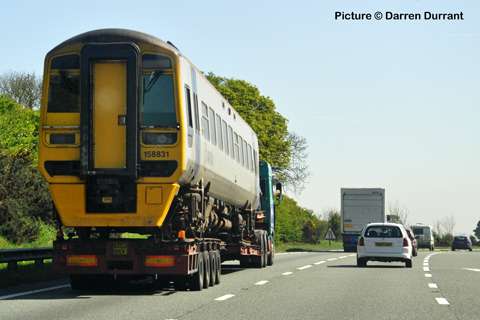
ERTMS problems are not the only recent troubles. Not many mornings ago a driver preparing his Class 158 at Pwllheli in the morning noticed that one of the brake disks has detached itself from its axle mountings and was hanging loose. The unit was eventually 'dragged' by another train to Porthmadog, at slow speed with the problem axles supported by a 'wheel skate', and on 28 April it was taken by road down the A55, no doubt destined for Arriva's overhaul works at Crewe. Darren Durrant was able to get these pictures from the passenger seat of a car...
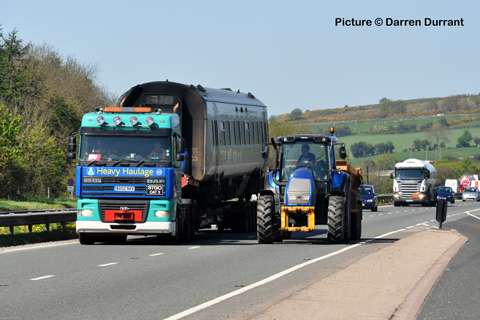
... a tractor driver seems surprised as he is overtaken by a train.
The Spring Thing - pictures by Ben Bucki
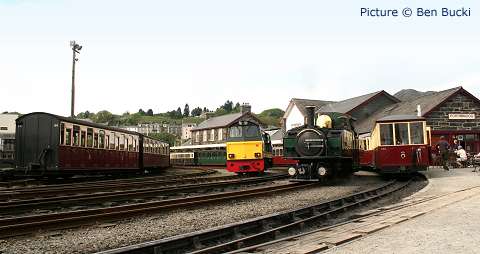
Some views from the Ffestiniog Railway and Welsh Highland Railway 'Spring Thing' event. Above, double Fairlie Earl of Merioneth runs around its train in Porthmadog Harbour Station in the morning of 23 April alongside station pilot Vale of Ffestiniog.
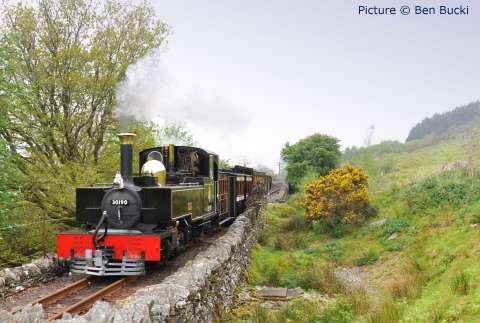
Lyd, seen near Penrhyn on 23 April.
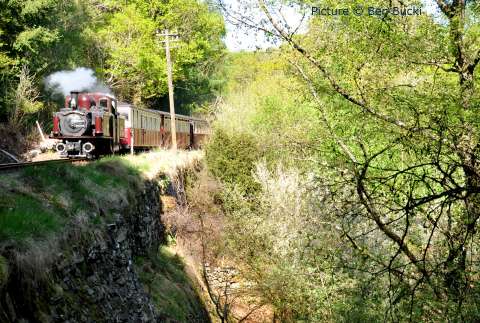
Ffestiniog Railway double Fairlie Merddin Emrys heads through the woods at Tan-Y-Bwlch with an afternoon service to Porthmadog on Sunday 24 April.
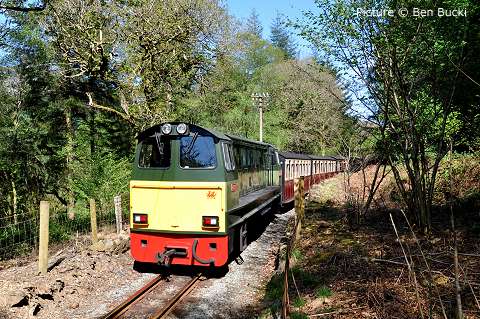
Vale of Ffestiniog works a train at Tan-y-Bwlch, 24 April.
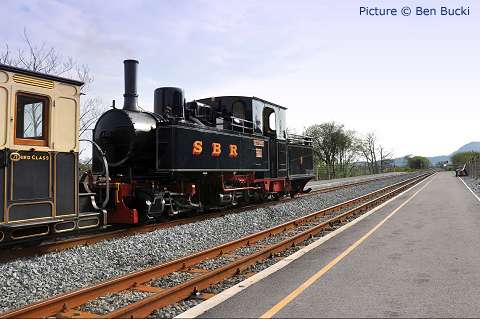
The visiting Mallet loco on the WHR at Pont Croesor, 16 April.
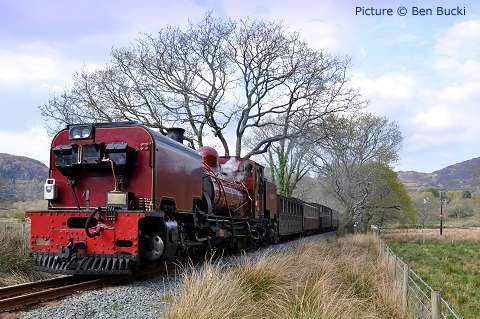
Welsh Highland Railway Garratt No.138 approaches Hafod-Y-Llyn with the last train of the day, Sunday 24 April.
Helsby freight - pictures by Bob Greenalgh
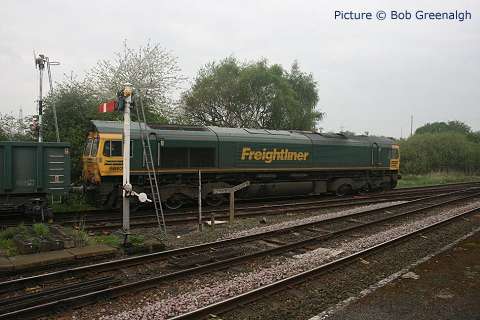
Helsby station early morning, 15 April. First the empty sand 6Z89
from Ellesmere Port to Warrington passes (above) at 08:15 behind 66 620, then the empty coal 4F02 Warrington to Ellesmere Port (below) came along at 08:17 with 70 011.
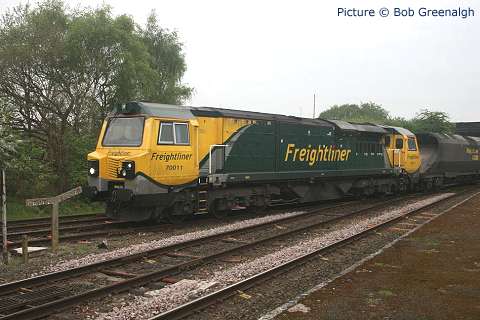
How long before they pass at Helsby and a lucky person gets the photo? It's great to see more freight at Helsby with the gypsum, coal and sand and perhaps cars in the future.
Peel Ports, who now own both the Ship Canal and the Port of Liverpool, tell us in a press release: Peel Ports Mersey and Quality Freight Group have combined to re-open the rail head at Ellesmere Port on the Manchester Ship Canal – 20 years after it closed. The first train to use the new facility arrived shortly before midnight on Thursday April 7, bringing a load of sand from Sibelco of King's Lynn destined for Quinn Glass of Elton, Cheshire. This will be a regular twice-weekly service, running every Wednesday and Friday.
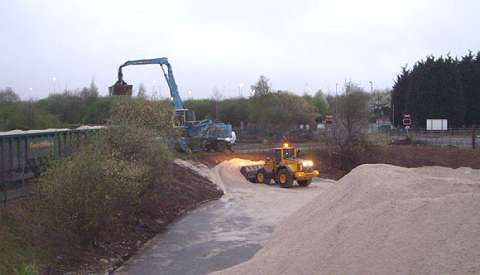
The re-opening is the result of substantial investment by the two companies in a receiving area and rail sidings – and Quality Freight has created two new jobs. The Green agenda and increasing fuel costs have made rail attractive, removing congestion from the roads, with the Sibelco load now only having to travel the final five miles to its destination by road. The picture provided by Peel Ports shows the unloading procedure.
Quality Freight Group managing director Sebastian Gardiner anticipates a significant increase in new rail volume during 2011 to further enhance the local rail freight network established by Peel to carry coal. Talks are already under way with more potential users, with a car option being trialled.
Nocturne
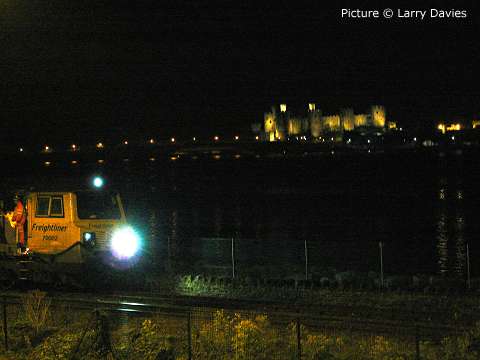
On the night of 18-19 April a train of 'AutoBallaster' wagons ran from Crewe Basford Hall on to the Llandudno branch, with work being carried out between Deganwy and Llandudno. The train was worked by 70 002 and 70 003 - possibly the first working of this type onto the Branch. The picture by Larry Davies in the early hours at Ffon Tom, Deganwy shows Conwy Castle
guarding 70 002.
Memories are made of this
For twenty-two years, hundreds of people have travelled far and wide from the line between Chester and Manchester via Northwich, on excursion trains run by the Mid Cheshire Rail Users Association (MCRUA). Passengers who travelled on their steam specials, the diesel rail tours and the yearly scenic tour, are now invited to share their experiences. The MCRUA have set up a new website documenting the trips, which first started back in 1988 with a tour from Chester to Settle and Carlisle railway station.
Chairman of MCRUA John Oates says: 'We are not just after lineside photos but also photos of those on board enjoying the excursions. Many bring their own food and our trips become dining cars on the way home. They are a great reminder of those old fashion days when families used to go to the seaside.'
Go to railtours.mcrua.org.uk to find out how to contribute.
North Wales Coast home page Archive Previous Noticeboard